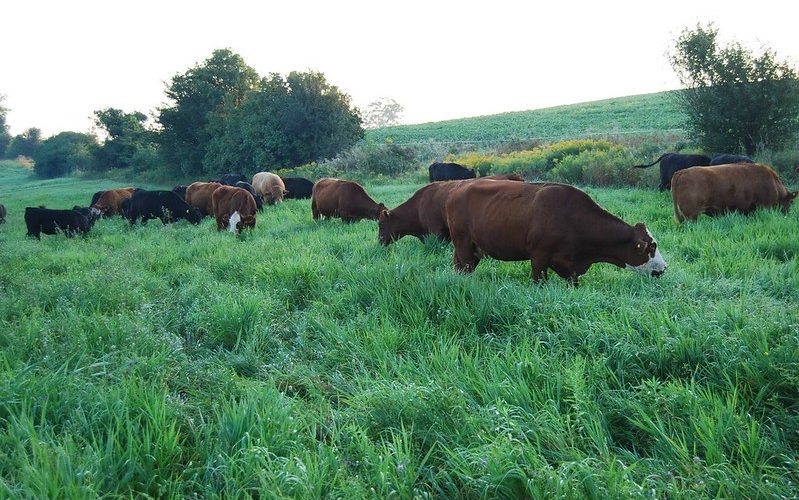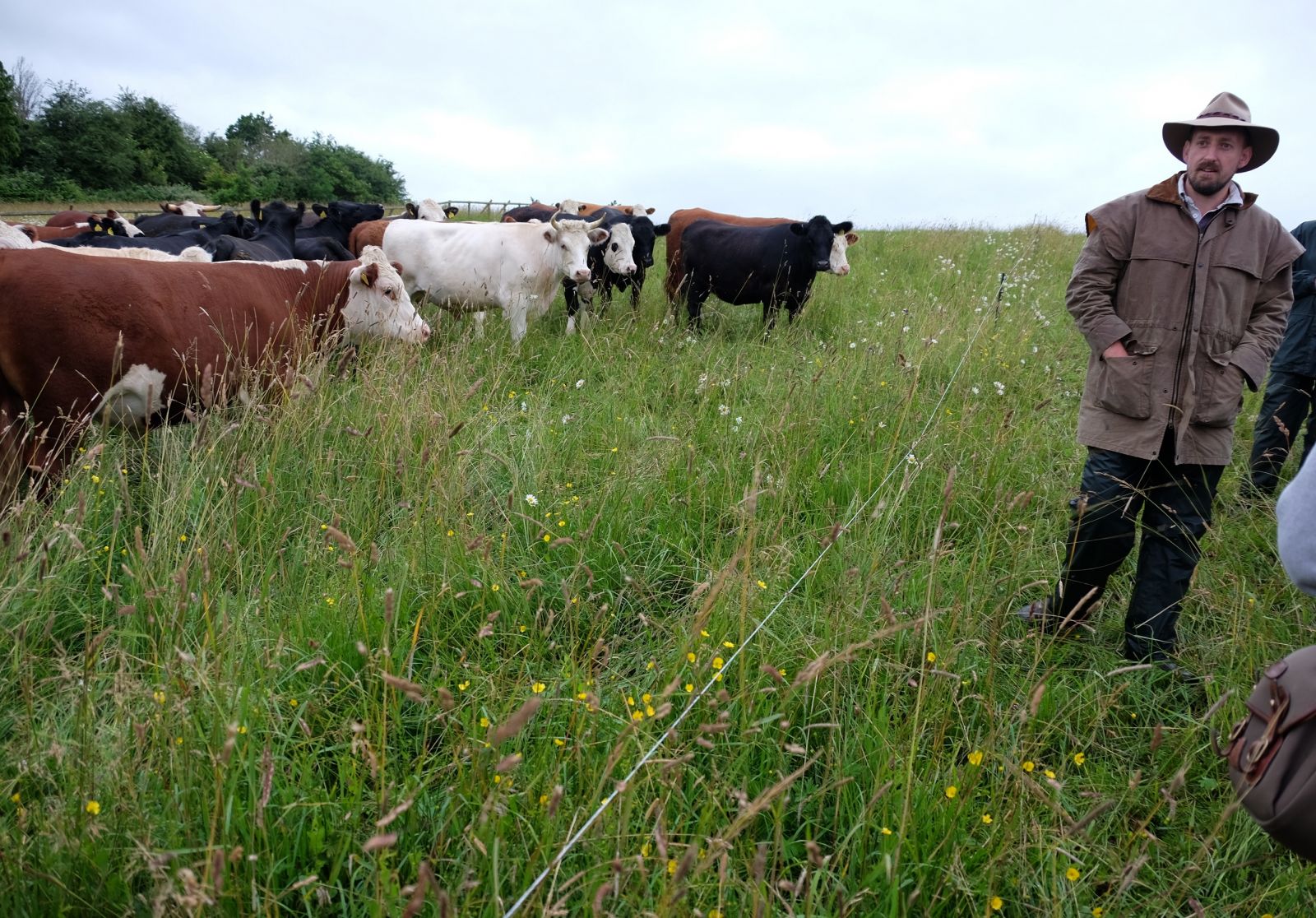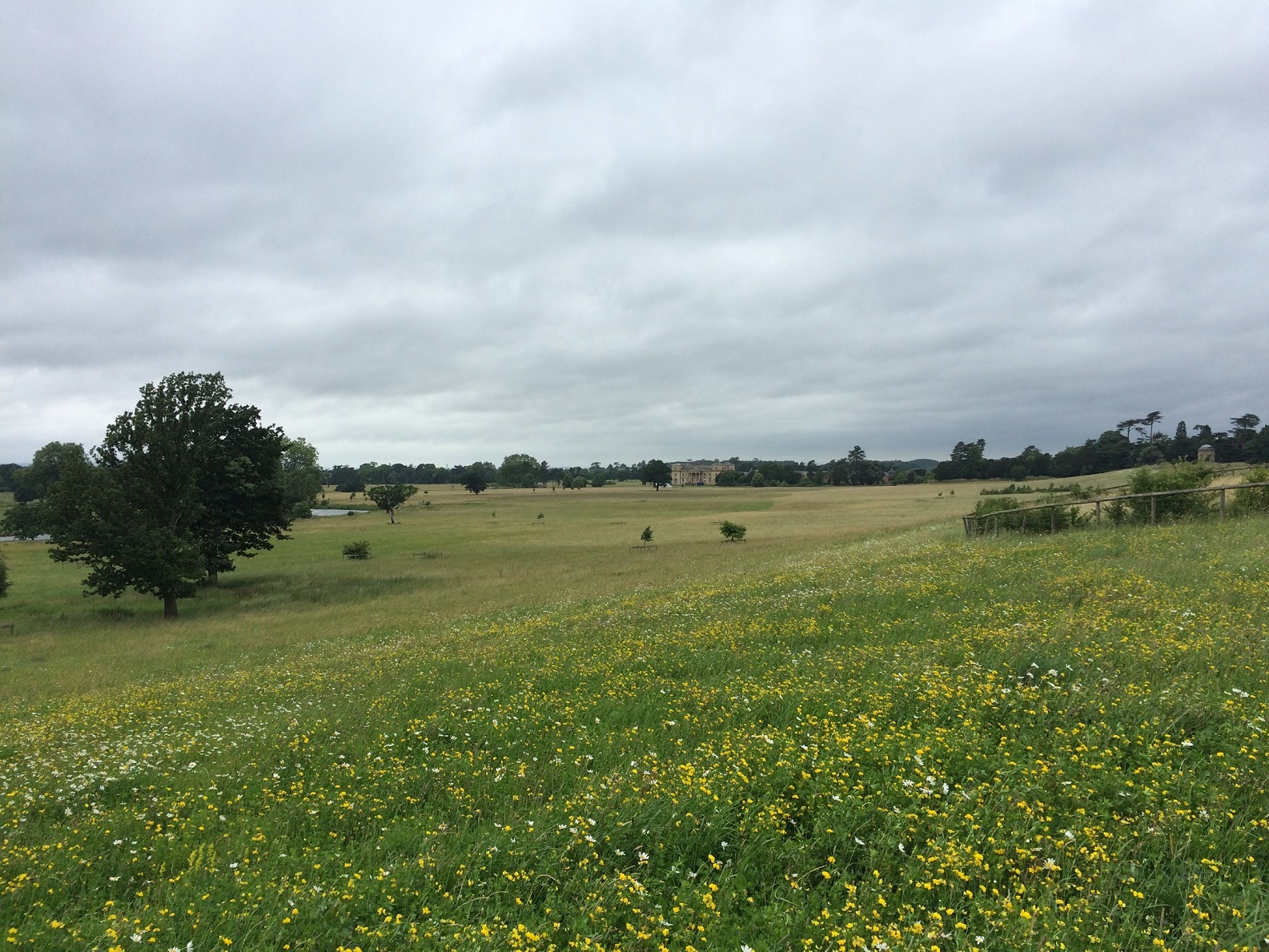Can you replace a tractor with a cow? No? I didn’t think so either, but…
Ok, so maybe not in the sense that you can hop on board, turn the stereo on and get stuck into the hay or silage cuts ready for your winter store. But what if the way you planned your grazing, along with some other simple measures, reduced your tractor work by 90%, eliminating the need to cut hay, muck-spread, add fertiliser or reseed your pastures? And another bonus – your vet bill might also go down!
Last month’s Holistic Management course run by RegenAg showed delegates how, through the use of planned adaptive grazing and financial planning, the majority of these activities can be avoided whilst creating productive and biodiverse pastures. And all for a fraction of the ongoing costs associated with orthodox pasture management…
Course leaders Tony McQuail and Rob Havard provided step-by-step guidance through the theory and practicality of a farming approach that doesn’t focus solely on production, but one that helps farmers identify how they can plan for real quality of life – allowing time for family and holidays whilst making a profit by working with natural processes and animal behaviours.
Tony, whose 100 acre mixed farm enterprise in Ontario, Canada, has been turning a profit without subsidy since 1995, is keen to emphasise that the course does not have the answers for each and every farm. His mantra is “you are the expert on your farm!.” However the course does provide farmers with a toolkit of different approaches to focus effort on the parts of farming enterprises that pay and, more importantly, can help give satisfaction in producing high quality and sustainable food. Whilst Holistic Management is well established in parts of more rain-deprived North America and Africa, it has only recently been taken up by a number of farming pioneers in the wetter, temperate UK.
Putting the approach in to practice…
Co-presenter and local, fifth-generation Worcestershire farmer Rob Havard is living proof that this approach can be applied successfully here in the UK. An unfortunate series of events, culminating with the foot-and-mouth outbreak of 2001, led to a troubling period for the Havard family’s Phepson Farm. Illness limited the ability of the family to rebuild the farm beef herd and it became clear after the outbreak that a reliance on livestock could no longer pay for itself. In order to survive, the family were forced to diversify; selling two thirds of their land to fund the set-up of a now thriving B & B and holiday let business.
(Rob Havard with his cattle mob at Croome Court Estate. Photo courtesy of Immo Fiebrig)
Since then Rob has been searching for a more sustainable way of making livestock pay. With a degree in ecology, experience in conservation grazing and as a Farm Advisor for Natural England, the discovery of holistic planned grazing made perfect sense. By using planned grazing to focus on maximising the amount of time that the pasture has to recover and build up productive dry matter that can be grazed year round, Rob has been able to build up the family beef enterprise again… and make a return to profit within a year.
It has allowed Rob to expand his enterprise, taking on an additional 180 acres at the National Trust’s Croome Court Estate. Not only that, but within a year of taking on the lease at Croome, orchids and a range of other wild flowers are now returning to the pastures after an absence of decades. This is indicative of how biodiversity is integrated into this approach and is typified by Rob’s chaperone around the estate – described by Rob as “the fattest kestrel in Worcestershire.” This bird of prey has been making the most of the rapid increase in the vole population that has accompanied the increase in pasture productivity and diversity. It feasts on a couple of the small mammals which break cover with every cattle move, and then retires to a nearby oak tree to survey Rob’s work (with great approval).
(Rejuvenated pasture now under Holistic Management within the National Trust Croome Court Estate. Photo courtesy of Immo Fiebrig)
Mob grazing and cover crops
One of the tools discussed on the course was the use of mob grazing; the practice of bunching relatively high numbers of livestock within small electric-fenced paddocks for a short period of time then moving across the land in a long chain of rotation. It’s a term familiar to some farmers and, perhaps, to listeners of the Archers on Radio 4. However, this is not the be-all and end-all of planned grazing. As with any tool, if used in the wrong way, it can cause more damage than good. What many of us attending the course found to be a revelation is that many pasture problems can be addressed by using mob grazing in a particular way. The length of time in the paddock, and the paddock’s size and shape, are not only dictated by the available forage, but also by wider goals related to building soil organic matter, dealing with weeds, improving nutrient availability, and increasing the rate and amount of pasture regrowth. This is all without the need to turn the tractor ignition key or buy fertiliser or herbicides.
Tony McQuail has taken this one step further on his mixed farm. Tony uses a mixture of planned grazing and ‘cocktail’ cover crops to rid his land of Canadian thistle (similar to creeping thistle) whilst building soil health and maintaining productive forage for his livestock. By planting a wide variety of annual cover crop varieties including herbs, root crops and grasses in one sowing, the cover crop outcompetes and halts the spread of thistle. Clearance of the cover crop by mob-grazed cattle then removes any remaining thistles, whilst providing additional natural fertiliser and soil carbon ready for a follow on cash crop. By maintaining and building soil structure, Tony has been able to provide continued crop productivity without the need for ploughing, fertiliser or herbicides.
Some wider benefits…
The focus on Holistic Management, regenerating healthy soils, and continuous cover, has much wider potential benefits too. By increasing the soil’s capacity to hold water and creating longer, luxuriant grass swards, such management has great potential to help address the ever increasing threat from flooding by slowing the flow of water to streams and rivers. In addition, the avoidance of fertiliser, particularly phosphates, may also play a part in improving river water quality in rural catchments.
Due to popular demand, RegenAg have invited Tony and Rob to run a further course on Holistic Management (January 16th-18th in Worcestershire, see here for details). The 3-day course includes a farm visit to Rob’s operation at the Croome Court Estate and plenty of opportunity to swap experiences with a wide range of people from different farming enterprises.
Matt Clegg is a Chartered Scientist working in catchment management, helping to develop flood management, river restoration, and biodiversity management projects in the UK and internationally. Interested in how we in the UK can develop profitable and sustainable farming approaches that provide multiple-benefits for farmers, local communities and the environment, he specialises in aquatic resource management; working with UK flood authorities on natural flood management research and development, and catchment planning projects trying to use water in the landscape in the most efficient way for farming.
Recent research has focused on identifying ways in which water can be stored and used within holistically managed pastures for livestock and forage production. A recent project he led included the development of wetland habitats within a 43Ha site working with farmers and local community groups. He is keen to further explore how such biodiversity-driven projects can be developed with sustainable and profitable livestock enterprises.
Editor’s note:
You can find various resources on Agricology that will provide insights into mob grazing and guidance on the use of cover crops, such as:
- ‘Use of diverse swards and ‘mob grazing’ for forage production’
- ‘Farming for carbon’
- ‘Cover crops: A practical guide to soil and system improvement’
- ‘Cover Crop and Living Mulch Wiki’
Header image: Cattle grazing lush September regrowth after a summer hay cut at Tony McQuail’s Meeting Place Organic Farm. Photo courtesy of Tony McQuail.



